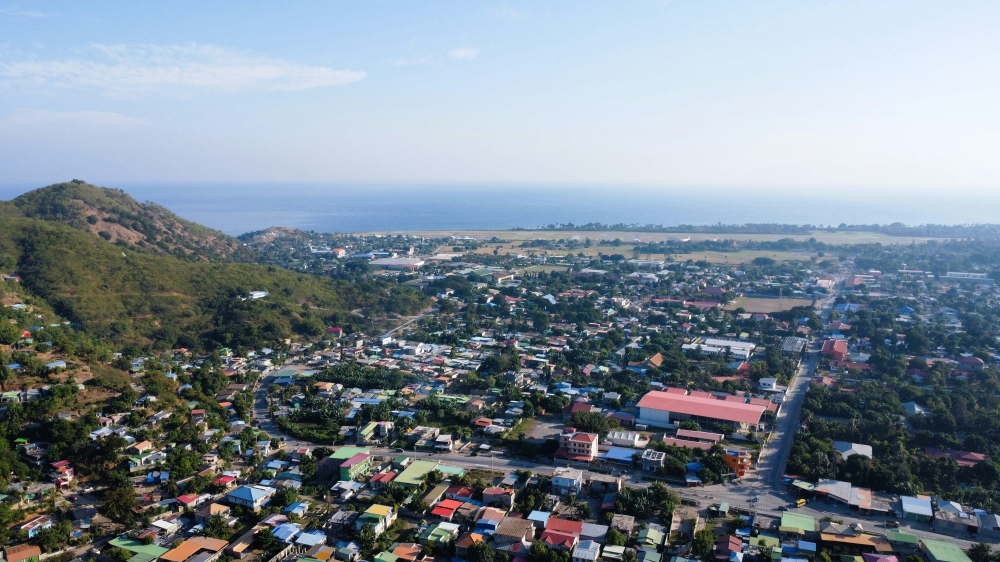KUALA LUMPUR, May 26 — When the announcement came on 26 May 2025 at the 46th Asean Summit in Kuala Lumpur that Timor-Leste would attain full membership in Asean at the upcoming 47th Summit in October, my heart leapt.
Over the years, I’ve come to know this small, beautiful country not just through research, but through time spent on its soil, through conversations, and shared experiences.
I’ve listened, learned, and grown alongside its people.
This moment is more than just a diplomatic milestone.
It’s personal.
It is a moment of recognition, a long-awaited regional embrace, and, I hope, transformation not just for Timor-Leste but for Asean as a whole.
This declaration by the 46ᵗʰ Asean Summit is historic.
For the first time, a clear and public timeline has been announced.
After years of evaluations, readiness assessments, quiet diplomacy and patient waiting, we now see a firm political commitment to welcome Timor-Leste into the Asean family.
It is not only long overdue but also profoundly significant.
Why this moment matters
Timor-Leste has been knocking on Asean’s door for over a decade.
The country formally applied for membership in 2011 and has been granted observer status since 2022.
Since then, it has consistently shown commitment through participating in Asean meetings, initiating institutional reforms, and building capacity across government institutions.
From improving public administration to strengthening its diplomatic engagement in the region, the country has made steady efforts to meet Asean’s expectations.
And yet, the road has not been easy.
Asean’s consensus-based decision-making has meant that progress has often been slow and unclear.
In Asean, consensus rules, but consensus can also stall.
Concerns over institutional readiness and economic disparities have slowed progress.
This has tested the patience of both Dili and its regional supporters.
But no country can ever be “perfectly ready.”
What matters is political commitment, and on that, Timor-Leste has delivered.
For me, this step affirms the collective efforts I’ve had the privilege of observing over the years, from the dedication of civil servants and government officials to the work of communities.
It also recognises the country’s unique post-colonial journey, marked by struggle, resilience, and a deep yearning to be part of the regional community it so strongly identifies with, both geographically and culturally.
Concerns over institutional readiness and economic disparities have slowed Timor-Leste’s progress, testing the patience of both Dili and its regional supporters. — Unsplash pic
Timor-Leste’s symbolic shift
Timor-Leste’s admission is about more than just increasing Asean’s membership count.
It signals a symbolic shift in how the region defines itself.
This is a country that emerged from conflict with a determination to chart its own democratic path.
While far from perfect, it has upheld democratic practices in ways that stand out in a region where political space is increasingly contested.
Its commitment to dialogue, peaceful transitions, and openness offers a valuable perspective rooted in lived struggle and hard-earned sovereignty.
For Asean, often criticised for its silence on democracy and rights, this could be a quiet recalibration.
Including Timor-Leste does not magically resolve these tensions, but it does invite a broader reflection: What kind of community does Asean want to be?
Timor-Leste’s presence, I believe, can bring fresh energy into this conversation, reminding the region that principles like justice, solidarity, and dignity should not be seen as external pressures, but as aspirations from within.
Looking ahead: Hopes and cautions
As someone who has spent over a decade with Timor-Leste’s society, political institutions, and cultural landscape, I hold cautious optimism for what this membership can bring for both sides.
For Timor-Leste, Asean membership is an avenue to diversify its foreign relations, secure economic partnerships, and gain a stronger diplomatic voice.
But there are risks too.
The bureaucratic demands of Asean integration can overwhelm small states.
Timor-Leste must ensure it is not subsumed into a passive role but instead brings its agency, voice, and lived experiences to the regional table.
It must guard its democratic spirit and not let Asean’s often non-confrontational norms dilute its advocacy for justice and human rights.
Capacity-building must go beyond government ministries.
Asean engagement must include Timorese youth, artists, educators, and rural communities.
Too often, regionalism in Southeast Asia is elite-driven and technocratic.
Timor-Leste has an opportunity to do things differently, especially if it grounds its Asean journey in participatory inclusion.
For Asean, Timor-Leste’s admission should be a wake-up call.
It must not treat Timor-Leste as a “charity case” or a symbol of inclusivity alone.
Instead, Asean must walk the talk by providing financial, technical, and political support to ensure Timor-Leste’s integration is smooth and sustainable.
And perhaps, in return, Asean gains something even more valuable: a renewed moral compass.
At a time when the region is grappling with the Myanmar crisis, South China Sea tensions, and growing US–China rivalry, it is easy to lose sight of the original aspiration: a united, resilient Southeast Asia that values peace, sovereignty, and dignity.
Timor-Leste’s journey, its scars, and its dreams can re-anchor that vision.
Making Asean matter to the people
One of my long-standing frustrations with Asean is how little it resonates with ordinary people.
Despite its decades-long existence, Asean still feels distant, abstract, and elite-driven.
For many across the region, Asean is a name on paper, not something that touches their daily lives.
Timor-Leste’s entry offers a chance to shift this perception.
This is a country whose people have fought hard to be seen and heard.
A story of a small state that dared to imagine itself as part of a regional community.
And that story, if told and shared meaningfully, has the power to connect with others across Southeast Asia, especially the youth who are searching for a regional identity that speaks to their hopes, not just official documents.
But this will require effort.
Asean must be more transparent and communicative about what Timor-Leste’s membership means.
It must invest in people-to-people exchange and create spaces for connection and dialogue.
Most importantly, it must treat this moment not as the end of a process, but as the beginning of a more grounded and inclusive regional vision.
Final reflections
The road ahead will not be without challenges.
Timor-Leste continues to face structural challenges, and Asean itself is far from a perfect institution.
But this moment, this decision to welcome Timor-Leste by October 2025, is a milestone worth celebrating and safeguarding.
From where I stand, having walked with Timor-Leste’s journey in my own small way, I can only hope Asean sees this moment not just a new member but the beginning of a meaningful partnership.
One that invites a shared vision of regionalism grounded not only in economic cooperation or political stability but also towards a Southeast Asia rooted in dignity, respect and shared belonging.
And perhaps, just perhaps, this long-awaited embrace can help Asean remember why it came together in the first place.
*Khoo Ying Hooi, PhD, is an associate professor of international relations and human rights at Universiti Malaya.
** This is the personal opinion of the writer or publication and does not necessarily represent the views of Malay Mail.





